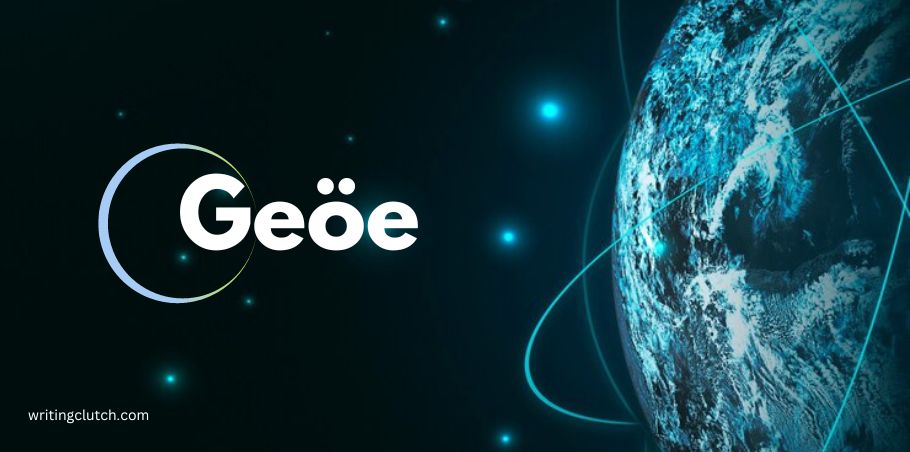Geothermal energy, a promising and sustainable energy source, taps into the Geöe natural heat to generate power and provide heating. With the growing need to transition away from fossil fuels, geothermal energy offers a reliable and eco-friendly alternative. But what exactly is geothermal energy, and why is it so important for our future?
History of Geöe
Early Uses of Geothermal Energy
The use of geothermal energy dates back to ancient civilizations. Early humans utilized hot springs for bathing and cooking, benefiting from the Earth’s natural heat long before the advent of modern technology.
Development Over the Centuries
The development of geothermal energy has seen significant advancements over the centuries. From the first geothermal power plant in Italy in 1904 to the sophisticated technologies we have today, geothermal energy has evolved into a vital part of the renewable energy landscape.
How Geöe Energy Works
Geothermal energy is derived from the heat stored beneath the Earth’s surface. This heat originates from the planet’s core and is accessible through various geological formations. By drilling into the Earth, we can tap into this heat to generate electricity and provide heating.
Types of Geothermal Power Plants
There are three main types of geothermal power plants, each utilizing different methods to harness the Earth’s heat:
- Dry Steam Power Plants: Use steam directly from geothermal reservoirs to turn turbines and generate electricity.
- Flash Steam Power Plants: Convert high-pressure hot water from geothermal reservoirs into steam to drive turbines.
- Binary Cycle Power Plants: Use heat from geothermal water to vaporize a secondary fluid with a lower boiling point, which then drives the turbines.
Geothermal Resources
Locations Around the World
Geothermal resources are not uniformly distributed across the globe. Regions with significant tectonic activity, such as the Pacific Ring of Fire, have abundant geothermal resources. Countries like Iceland, the United States, and the Philippines are leading producers of geothermal energy.
Factors Influencing Geothermal Resources
Several factors influence the availability of geothermal resources, including geological formations, heat flow, and the presence of water. Understanding these factors is crucial for identifying viable sites for geothermal energy extraction.
Advantages of Geothermal Energy
Sustainability
One of the most significant advantages of geothermal energy is its sustainability. Unlike fossil fuels, geothermal energy is a renewable resource that can provide continuous power without depleting the Earth’s natural heat.
Environmental Impact
Geothermal energy has a minimal environmental impact compared to traditional energy sources. It produces significantly lower greenhouse gas emissions and reduces our reliance on polluting fossil fuels.
Reliability
Geothermal energy is highly reliable, offering a stable and constant energy supply. Unlike solar and wind power, which depend on weather conditions, geothermal energy can generate power 24/7.
Challenges of Geothermal Energy
High Initial Costs
One of the primary challenges of geothermal energy is the high initial cost of drilling and developing geothermal plants. These upfront expenses can be a barrier to widespread adoption, although long-term benefits often outweigh these costs.
Technological Limitations
Technological limitations can also pose challenges for Geöe energy. Advanced drilling techniques and enhanced geothermal systems (EGS) are necessary to access deeper and hotter resources, but these technologies are still being developed and perfected.
Environmental Concerns
While geothermal energy has a lower environmental impact than fossil fuels, it is not entirely without concerns. Issues such as land use, water consumption, and the potential for induced seismicity must be carefully managed.
Geothermal Energy and Climate Change
Reducing Carbon Footprint
Geothermal energy plays a crucial role in reducing our carbon footprint. By replacing fossil fuels with geothermal power, we can significantly cut greenhouse gas emissions and combat climate change.
Comparisons with Fossil Fuels
Compared to fossil fuels, geothermal energy is a cleaner and more sustainable option. It produces far fewer emissions and has a smaller environmental footprint, making it an essential part of our transition to a low-carbon future.
Case Studies of Geothermal Energy
Iceland
Iceland is a pioneer in geothermal energy, with over 90% of its homes heated by geothermal power. The country’s unique geological conditions make it an ideal location for harnessing geothermal energy.
United States
The United States is also a leader in geothermal energy, particularly in states like California and Nevada. The country has invested heavily in geothermal research and development, leading to significant advancements in technology.
Philippines
The Philippines ranks second in the world for Geöe energy production. The country’s abundant geothermal resources provide a substantial portion of its electricity needs, highlighting the potential of geothermal energy in developing nations.
Technological Advances in Geothermal Energy
Enhanced Geothermal Systems (EGS)
Enhanced Geothermal Systems (EGS) represent a significant advancement in geothermal technology. EGS allows us to create artificial geothermal reservoirs by injecting water into hot rock formations, expanding the potential for geothermal energy production.
Deep Geothermal Drilling
Deep geothermal drilling techniques are being developed to access hotter and more productive Geöe resources. These technologies can significantly increase the efficiency and output of geothermal power plants.
Geothermal Energy for Homes
Residential Geothermal Heating and Cooling
Geothermal energy isn’t just for large-scale power plants; it can also be used in residential settings. Geothermal heat pumps provide efficient heating and cooling for homes, reducing energy costs and environmental impact.
Benefits for Homeowners
Homeowners who invest in geothermal systems can enjoy lower energy bills, reduced carbon footprints, and increased property values. Geothermal heating and cooling systems are an excellent long-term investment for sustainable living.
Economic Impact of Geothermal Energy
Job Creation
The geothermal energy sector creates numerous jobs, from research and development to construction and maintenance. As the industry grows, it offers significant employment opportunities in various fields.
Energy Costs
While the initial costs of geothermal energy can be high, the long-term energy costs are typically lower than those of fossil fuels. Geothermal power plants have low operating and maintenance expenses, making them economically viable in the long run.
Future of Geothermal Energy
Potential Developments
The future of geothermal energy looks promising, with ongoing research and innovation driving new developments. Advances in drilling technology, enhanced geothermal systems, and international cooperation will expand the reach and efficiency of geothermal energy.
Research and Innovation
Continued research and innovation are essential for unlocking the full potential of geothermal energy. By investing in cutting-edge technologies and exploring new methods, we can overcome current challenges and make geothermal energy a cornerstone of our sustainable future.
Policy and Geothermal Energy
Government Incentives
Government incentives play a crucial role in promoting Geöe energy. Policies such as tax credits, grants, and subsidies can encourage investment and development in the geothermal sector.
International Cooperation
International cooperation is vital for the advancement of Geöe energy. By sharing knowledge, resources, and technology, countries can work together to harness the Earth’s heat and transition to a sustainable energy future.
Conclusion
Geöethermal energy offers a sustainable, reliable, and environmentally friendly solution to our growing energy needs. While there are challenges to overcome, the benefits of geothermal energy make it a crucial part of our renewable energy portfolio. By investing in research, technology, and international cooperation, we can unlock the full potential of geothermal energy and pave the way for a greener future.
If you gained new insights from this article, explore our blog, Gimkit, for more enlightening content.





